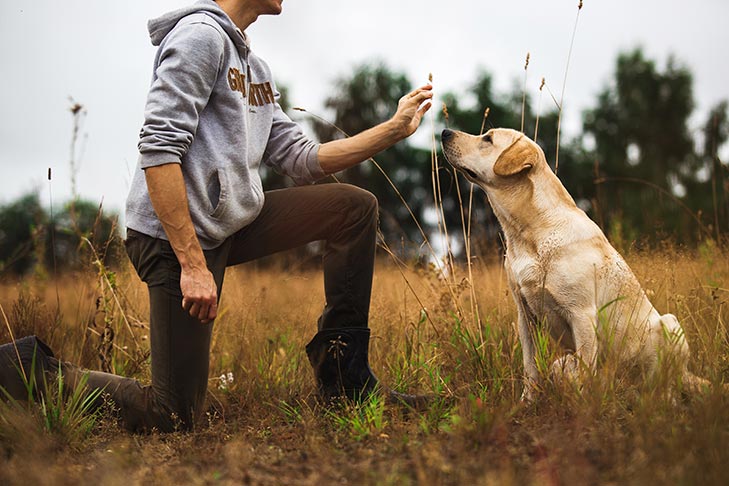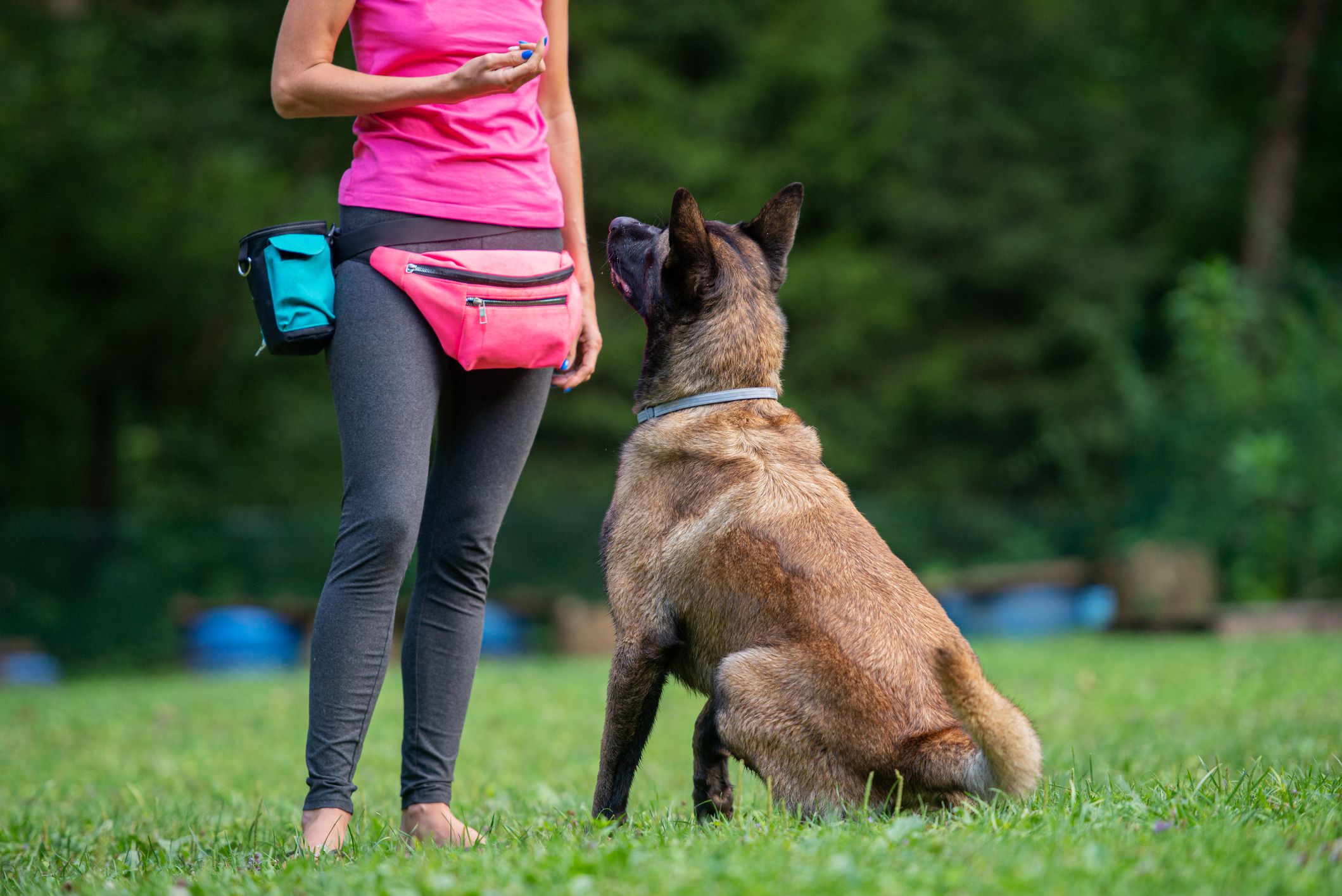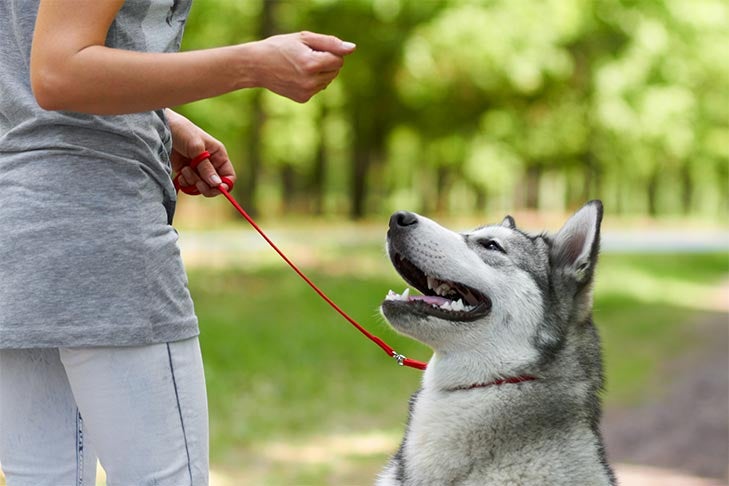Introduction
- Why proper dog training is essential for a happy and harmonious relationship with your furry companion
- The benefits of dog training, including improved behavior, socialization, and mental stimulation
- Introduce the primary keyword and related keywords naturally

Understanding the Basics of Dog Training
- Different dog training methods and approaches
- Importance of positive reinforcement and reward-based training techniques
- How consistency and patience play a key role in successful dog training
- Incorporate primary keyword and related keywords smoothly
Essential Commands for a Well-Behaved Dog
- Sit, stay, and lie down: Teach your dog basic obedience commands
- Recall command: Ensure your dog comes to you when called
- Loose-leash walking: Train your dog to walk politely on a leash
- Integrate primary keyword and related keywords within the content
House Training: Say Goodbye to Accidents
- Establish a routine for bathroom breaks
- Crate training: A useful tool for potty training
- Recognizing signs when your dog needs to go outside
- Incorporate primary keyword and related keywords smoothly
Socialization: Building Confidence and Positive Behavior
- Exposing your dog to different environments, people, and other pets
- The importance of positive social interactions for your dog’s well-being
- Tips for successful dog socialization
- Integrate primary keyword and related keywords within the content
Addressing Behavioral Issues
- Dealing with separation anxiety
- Aggression management and prevention
- Barking and chewing: How to curb unwanted behaviors
- Incorporate primary keyword and related keywords smoothly
Advanced Training Techniques for Mental Stimulation
- Teaching your dog tricks and advanced commands
- Using puzzle toys and interactive games for mental exercise
- Incorporate primary keyword and related keywords within the content
Training for Specific Needs and Purposes
- Service dog training: Assisting individuals with disabilities
- Therapy dog training: Providing comfort and support in various settings
- Sports and agility training: Channeling your dog’s energy into fun activities
- Integrate primary keyword and related keywords smoothly
Training Tips for Different Dog Breeds
- Understand breed-specific traits and temperaments
- Tailoring training methods to suit your dog’s breed
- Common challenges and solutions for specific breeds
- Incorporate primary keyword and related keywords in a natural manner
Troubleshooting: When Training Hits a Roadblock
- Identifying potential obstacles and challenges during training
- Seeking professional help and guidance
- Patience and perseverance: Overcoming setbacks in training
- Integrate primary keyword and related keywords within the content
Read About- Mastering Dog Training at Home: A Comprehensive Guide to Strengthening the Bond 2023
Conclusion
Recap the importance and benefits of dog training
Encourage readers to embark on their dog training journey
Reinforce the main message and include a call-to-action
Introduction
As a dog owner, you want nothing but the best for your furry friend. A well-behaved and obedient dog not only makes your life easier but also strengthens the bond between you and your canine companion. In this comprehensive guide to dog training, we will explore the essential techniques and tips to help you successfully train your four-legged friend. Whether you’re a new dog owner or looking to brush up on your training skills, this guide will equip you with the knowledge and tools to create a harmonious and happy relationship with your pup.
Understanding the Basics of Dog Training
Before diving into specific training techniques, it’s crucial to understand the fundamentals of dog training. There are various methods and approaches to dog training, but the most effective and humane approach is through positive reinforcement. Positive reinforcement involves rewarding desired behaviors to encourage their repetition, while avoiding punishments or harsh corrections. This method not only strengthens the bond between you and your dog but also creates a positive learning environment.
Read About- 10 Strongest Shock Collar for Dogs– Shopping Guide & Critiques
Consistency and patience are two key ingredients for successful dog training. Dogs thrive on routine, so establishing a consistent training schedule will help them understand what is expected of them. Remember, each dog learns at their own pace, so be patient and avoid getting frustrated. With the right mindset and approach, you’ll be amazed at how quickly your dog picks up new commands and behaviors.
Essential Commands for a Well-Behaved Dog
Teaching your dog basic obedience commands is essential for their safety and your peace of mind. Start with simple commands like “sit,” “stay,” and “lie down.” These commands lay the foundation for more advanced training and help establish your role as the pack leader. Remember to use positive reinforcement techniques, such as treats and praise, to reward your dog when they successfully perform each command.
Another crucial command to teach your dog is the recall command. A reliable recall ensures that your dog comes to you when called, regardless of distractions. This command is especially important during off-leash activities or in emergency situations. Practice the recall command in a controlled environment and gradually increase the level of distractions as your dog becomes more proficient.
Walking your dog should be an enjoyable experience for both of you. Teach your dog to walk politely on a leash by using the loose-leash walking technique. Encourage them to walk beside you without pulling or tugging. Remember to reward them with treats and praise when they exhibit the desired behavior.
House Training: Say Goodbye to Accidents
One of the first and most crucial aspects of dog training is house training. Accidents happen, especially with puppies, but with the right approach, you can minimize and eventually eliminate them. Establishing a routine for bathroom breaks is essential. Take your dog outside first thing in the morning, after meals, and before bedtime. This routine helps them understand when and where they are expected to eliminate.
Crate training can also be a useful tool for house training. Dogs have a natural instinct to keep their sleeping area clean, so utilizing a crate can aid in teaching them bladder and bowel control. Introduce the crate gradually and make it a comfortable and positive space for your dog. Avoid using the crate for punishment or prolonged periods of time.
Read About- 10 Strongest Shock Collar for Dogs– Shopping Guide & Critiques
Socialization: Building Confidence and Positive Behavior
Socializing your dog is vital for their overall well-being and behavior. Exposing them to different environments, people, and other animals helps build confidence and promotes positive social interactions. Start socializing your dog from an early age and continue throughout their life.
Organize playdates with other friendly and vaccinated dogs, visit pet-friendly locations, and expose your dog to various sights, sounds, and smells. Always supervise your dog during socialization sessions and ensure they are comfortable and enjoying the experience. Offering treats and praise during social interactions can reinforce positive behavior and make socialization a positive experience for your furry friend.
Addressing Behavioral Issues
Sometimes, despite our best efforts, dogs may develop behavioral issues that require special attention. Separation anxiety, aggression, barking, and chewing are common problems that dog owners may face. Addressing these issues requires patience, consistency, and sometimes professional help.
For separation anxiety, gradually desensitize your dog to being alone by starting with short periods of separation and gradually increasing the duration. Create a safe and comfortable space for your dog when you’re away and provide engaging toys or treats to keep them occupied.
Aggression management and prevention involve identifying triggers, implementing positive reinforcement techniques, and seeking guidance from a professional dog trainer or behaviorist. It’s essential to understand the underlying causes of aggression and address them appropriately.
Barking and chewing are natural behaviors for dogs, but excessive or destructive behavior needs to be managed. Provide appropriate toys and outlets for chewing, redirect excessive barking with positive reinforcement, and ensure your dog receives sufficient mental and physical stimulation.
Advanced Training Techniques for Mental Stimulation
Once your dog has mastered basic obedience commands, it’s time to introduce them to more advanced training techniques. Teaching your dog tricks not only impresses your friends but also provides mental exercise and challenges their problem-solving abilities.
Use puzzle toys and interactive games to stimulate your dog’s mind. These toys require them to solve puzzles or find hidden treats, keeping them engaged and mentally sharp. Incorporating mental stimulation into their daily routine helps prevent boredom and destructive behavior.
Training for Specific Needs and Purposes
Beyond basic obedience, there are specific training programs that cater to different needs and purposes. Service dog training assists individuals with disabilities by providing them with necessary support and performing specific tasks. Therapy dog training prepares dogs to offer comfort and emotional support in hospitals, nursing homes, and other therapeutic settings.
Sports and agility training channel your dog’s energy into fun activities. These activities not only provide physical exercise but also enhance the bond between you and your dog. Participating in sports and agility competitions can be a rewarding experience for both you and your furry friend.
Dog Training Tips for Different Dog Breeds
Understanding your dog’s breed-specific traits and temperaments is key to effective training. Different breeds have varying levels of intelligence, energy, and prey drive, which should be taken into consideration when formulating training strategies.
Tailor your training methods to suit your dog’s breed and individual personality. Some breeds may respond better to certain techniques or be more motivated by specific rewards. Learn about common challenges faced by your dog’s breed and explore effective solutions.
Troubleshooting: When Training Hits a Roadblock
At times, training may hit a roadblock, and you may encounter obstacles or challenges. It’s important not to get discouraged and instead seek professional help and guidance when needed. Trained dog behaviorists or certified dog trainers can provide expert advice tailored to your specific situation.
Patience and perseverance are crucial when facing setbacks in training. Every dog is unique, and some may take longer to grasp certain commands or behaviors. Stay committed, practice consistency, and celebrate small victories along the way.
Conclusion
Dog training is an ongoing process that requires time, dedication, and a positive mindset. By utilizing positive reinforcement, establishing consistent routines, and providing mental and physical stimulation, you can create a well-behaved and happy canine companion. Remember, dog training is not just about teaching commands but also about building a strong bond and fostering a harmonious relationship with your furry friend. So, embark on your dog training journey with confidence and patience, and enjoy the rewards it brings.
Call-to-Action:
Ready to start training your dog? Check out our comprehensive guide on housebreaking puppies for step-by-step instructions and valuable tips to ensure a smooth transition with minimal accidents. Your pup will thank you for it!
Read About- Mastering Dog Training at Home: A Comprehensive Guide to Strengthening the Bond 2023


:max_bytes(150000):strip_icc()/man-training-dog-735898051-2000-eef075257ca44a22828da97373d88e2a.jpg)